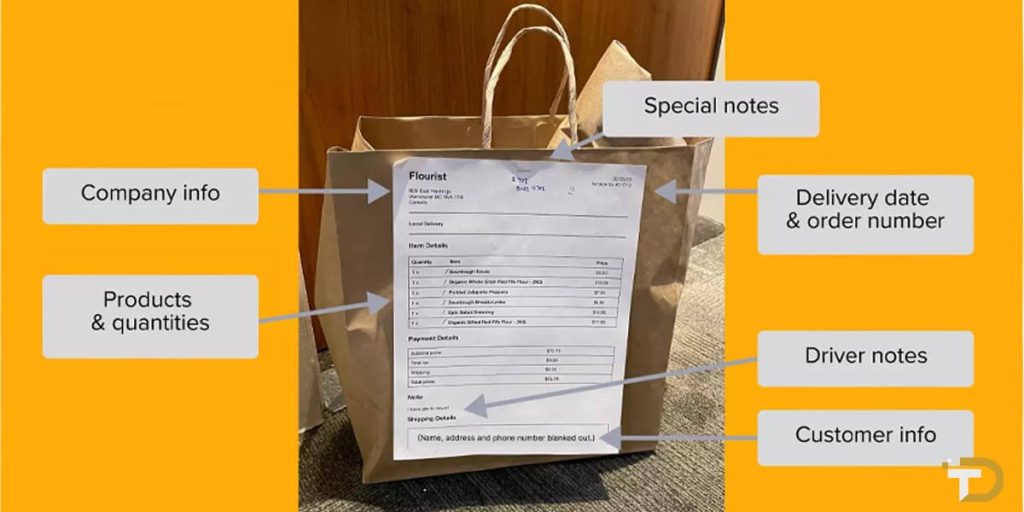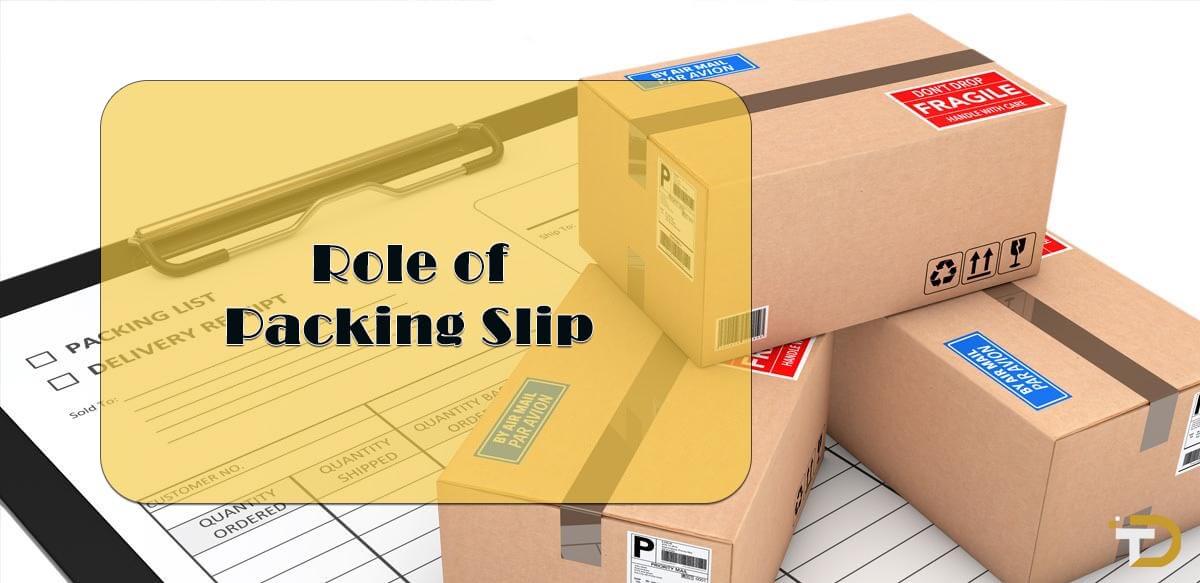Role of Packing Slip in Logistics and Order Fulfillment
A packing slip is a crucial document in logistics and shipping that provides important details about shipment contents. While packing slips may seem like a simple piece of paper, they serve several important functions and provide value to both buyers and sellers. In this article, we will delve deeper into packing slips by defining them, exploring their information, examining their practical uses and importance, comparing them to other shipping documents, outlining best practices for creating them and providing real-world examples of how companies leverage them.
What is a Packing Slip?
At its core, a packing slip is a document that accompanies a shipment and provides specifics on what is being delivered. Packing slips serve as a receipt, listing the contents and quantities of items within a package. They bridge the gap between order placement and delivery fulfilment stages of the commerce process.
More formally, a packing slip can be defined as:
A record that the shipper prepares accompanies a shipment that lists the contents and quantities of the items being delivered. Packing slips provide proof of the shipment contents and are used to verify the order is accurate and complete.
In summary:
- Packing slips travel with shipments and list shipment contents.
- They provide proof and details of what is being delivered.
- Their purpose is to verify the accuracy and completeness of orders.
While packing slips may seem like a simple piece of paper, they play an important role in logistics operations by providing a paper trail and shipment accountability.
Information Included on a Packing Slip
A packing slip must contain certain key information to serve its purpose effectively. The details included may vary slightly depending on the business or industry, but most packing slips contain some combination of the following core elements:
- Sender and recipient contact information: This includes the names, addresses, phone numbers, and email addresses of both the shipper and consignee.
- Order number: The unique number associated with the purchase order, used for tracking and reference.
- Shipment date: The date the items are shipped from the sender.
- Item list: A list of shipped items, including descriptions and SKU/product codes.
- Quantities: The number of units or amount of each item shipped.
- Package details: Package-specific information like tracking numbers, weight, dimensions, etc.
- Shipping method: The carrier name and service are used to ship the package.
- Customs declarations (for international): Any customs forms or declarations required.
- Return policy: Instructions for returns, refunds, or exchanges if needed.
Including all pertinent details helps packing slips effectively serve their purpose at each stage of the fulfilment process. Leaving out information could lead to errors or inefficiencies.
Differences from Other Shipping Documents

While packing slips, bills of lading, and invoices all pertain to shipments, they differ in their specific functions:
Packing Slip: Documents shipment contents for verification but does not include payment details. Serves as a receipt.
Bill of Lading: A contract between the carrier and shipper detailing delivery obligations.
Invoice: Requests payment and indicates payment terms/amounts owed. Separate from shipment contents.
The key differences come down to purpose – packing slips document what is shipped, bills of lading are carrier contracts, and invoices request payment. Understanding how they vary provides important context around their distinct yet complementary roles in order fulfilment.
How to Create Packing Slips
With the basics of packing slips understood, let’s outline best practices for actually creating them:
Design a Template
Create a reusable packing slip template in Excel or Word that incorporates all necessary fields.
Populate Template
Input order details, like items shipped, quantities, recipient information, etc.
Print on Specialized Label Paper
Print packing slips on labels or paper suitable for shipping environments.
Include Multiple Copies as Needed
Place one inside and another outside of the package for visibility and durability.
Attach Securely to Package
Use tape designed for shipping environments that won’t damage contents.
Include Digital Copies as Needed
Email or otherwise transmit electronic copies to track shipments digitally.
Update Systems as Shipped
Record shipments in your order management, inventory, and carrier systems.
Following these steps helps produce high-quality, information-rich packing slips to streamline the fulfilment process for all involved.
Read More: Guide to Crafting an Impactful Ecommerce Growth Strategy
Real-World Packing Slip Examples
Let’s explore how some major companies leverage packing slips in innovative ways:
Amazon – Amazon utilizes electronic packing slips sent via email to reduce paper waste. This green initiative saves millions of sheets annually.
Walmart – Walmart integrated packing slips with its vast inventory systems, enabling dynamic, barcode-driven packing slips for accuracy at scale.
FedEx – FedEx has highly customized international packing slip protocols to speed up customs clearance. This shaves days off delivery windows.
Target – Target’s packing slip and inventory integration lowered out-of-stock rates by 10% by catching fulfilment errors earlier.
Etsy – Etsy promotes sustainability by encouraging eco-friendly packing slip materials to align with its mission.
Nike – Nike’s digital packing slips complemented initiatives to operate more sustainably through less paper and waste.
As shown, even simple adaptations like electronic formats or tight inventory linking can unlock major benefits. Advanced uses continuously optimize the customer experience.
Packing Slips in Specific Contexts

Let’s explore packing slips in some specific operational contexts:
E-Commerce: Packing slips bridge the gap for online orders, transforming virtual purchases into physical deliveries.
3PL Fulfillment: 3PLs rely on accurate, detailed packing slips to orchestrate complex multi-client fulfilment.
Returns: Packing slip details streamline returns by documenting original order and shipment info.
International: Packing slips must include customs forms and comply with cross-border regulations.
Sustainability: Electronic, recyclable, or optimized packing slips reduce waste and align with green goals.
Warehousing: Packing slips integrate into WMS and inventory systems for seamless fulfilment tracking.
Large Volume: Scaling packing slip processes handle high volumes without sacrificing quality or efficiency.
As needs vary, flexible packing slip strategies fit specific operational models for optimized outcomes.
Future of Packing Slips
While the core functions of packing slips remain the same, their form factors continue to evolve with technology:
Digital/Electronic Packing Slips: Email, portal, or system access to packing slip documents and images.
Dynamic Packing Slips: Data-driven packing slips that auto-populate from order systems for speed and accuracy.
Integrated Packing Slips: Tight order and inventory system links update packing slips in real time.
Customizable Packing Slips: Template customization options and variable fields support different business needs.
Analytics-Driven Packing Slips: Data-backed packing slip enhancements like optimized templates and formats.
AR/VR Packing Slips: Potential for virtual/augmented reality in warehouse applications like assembly verification.
As fulfilment scales to unprecedented volumes, technology will continue transforming packing slips to keep pace with evolving operational demands. Their core purpose, however, will remain to ensure fulfilment accuracy.
Conclusion
While packing slips may seem simple, they serve important functions through each stage of the fulfilment process. Packaging slips facilitate seamless order fulfilment while building trust by documenting shipment contents and exchanging vital details between buyers and sellers.





